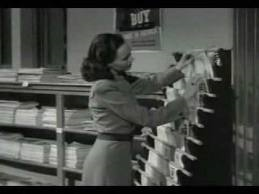Travis, the protagonist of Taxi Driver, is just trying to live in the world like everyone else. Just like everyone else he has his own idea of how the world should be. After serving in the Marine Corps during the Vietnam War, Travis returns to New York City. However the city he returns to is not the city that he had left. The landscape and demographic is unrecognizable to him. This is visually noticeable during the opening scene of the film. As the taxi is driving around, the images outside the windows are blurred and indistinguishable.
Travis struggles to understand the way of life in the city but continually fails in various situations. The first time occurs during a visit to an adult movie theater. Travis attempts to casually speak to the cashier, and she threatens to call the manager. By treating her as a person instead of just a cashier he has broken one of the unwritten rules of this society. People are no longer treated as people but are treated according to their occupation. The most blatantly obvious incident is when Travis takes Betsy out on a date to an adult movie theater. He claims that a lot of couples go to movies like this; therefore he thinks it is appropriate as a dating activity. The couples he witnesses going into these theaters are not all heterosexual, and those that are heterosexual are not healthy functioning couples.
After struggling to fit into this strange society, Travis is eventually told flat out that he is a square. He cannot fit into society and does not have a purpose being a part of it. His purpose according to a fellow taxi driver is his job. Although he is currently employed as a taxi driver, his original occupation was a soldier. As a soldier his purpose is to kill enemies of the state. This is all he has known during his time in the Marine Corps. To fulfill this purpose, he ends up killing a pimp, the pimp’s boss, and the time keeper of the room used for prostitution. These are the enemies of his ideal state and world.
Taxi Driver illustrates the struggles that soldiers returning from war may encounter as they attempt to reintegrate into society. Although it follows Travis, other characters such as Iris illustrate how difficult it is for people to find their way in society. People must either give up and take part in a society that exploits them or be alone and disgusted by this society.











